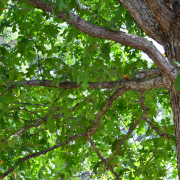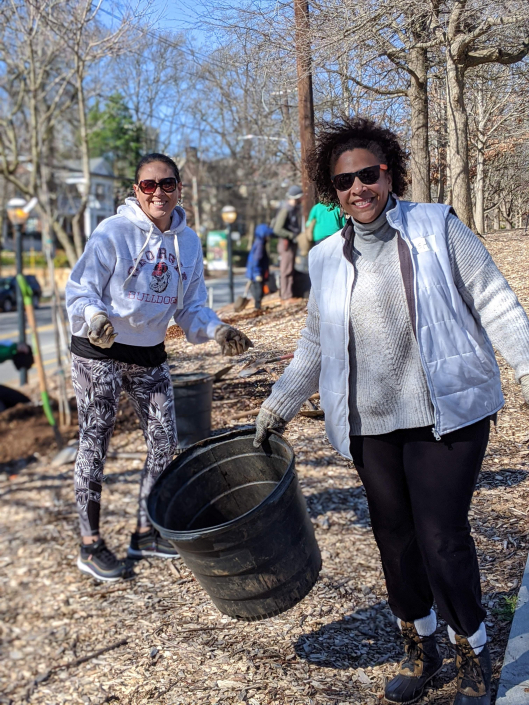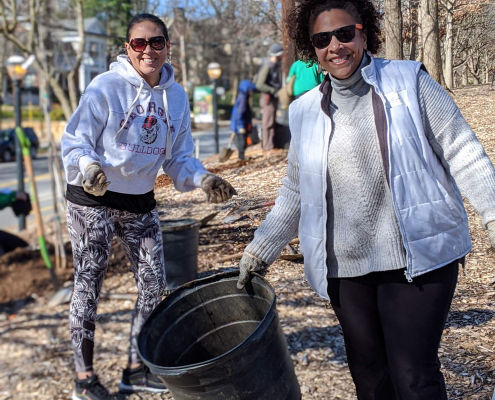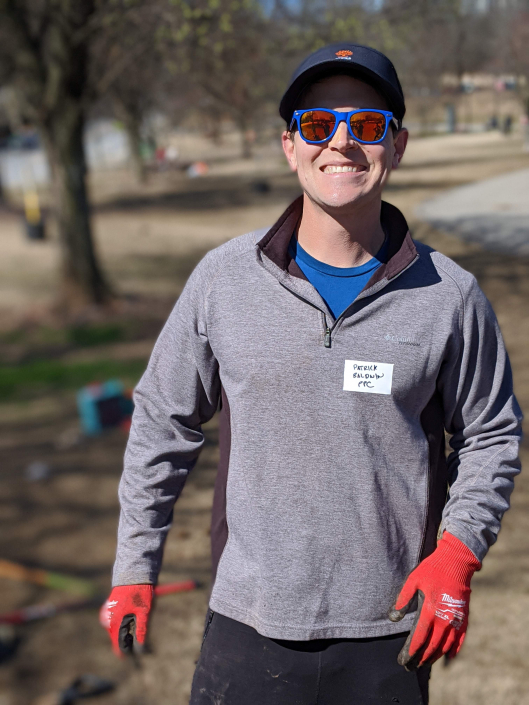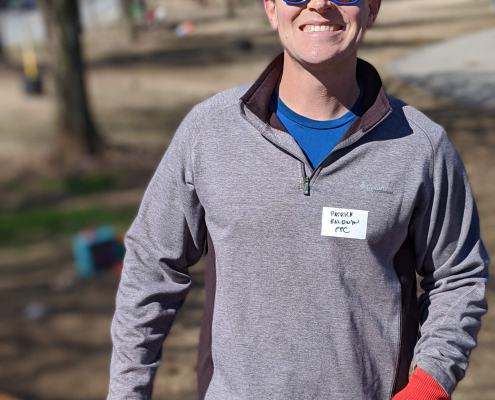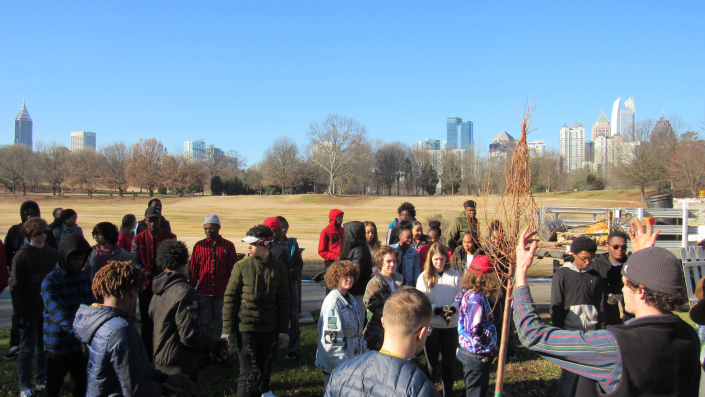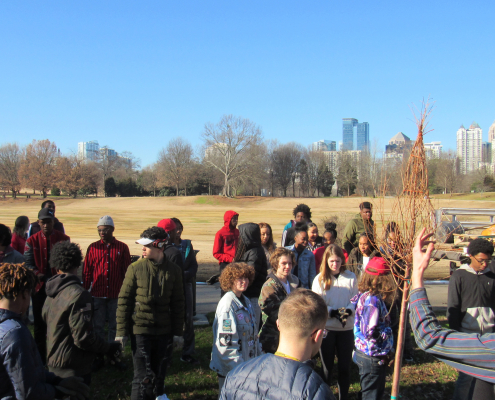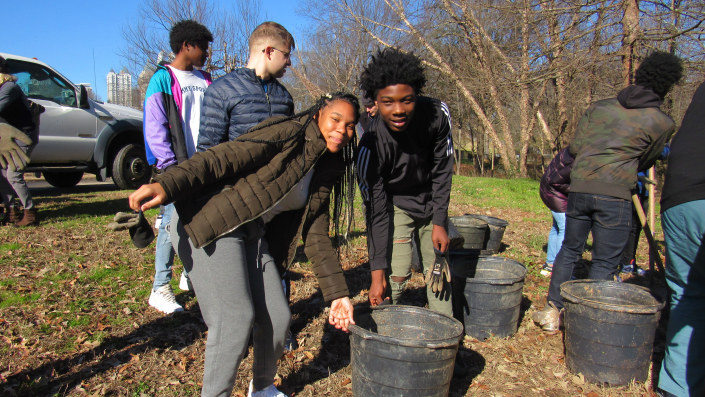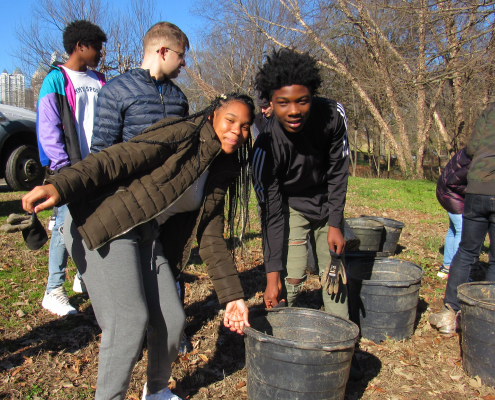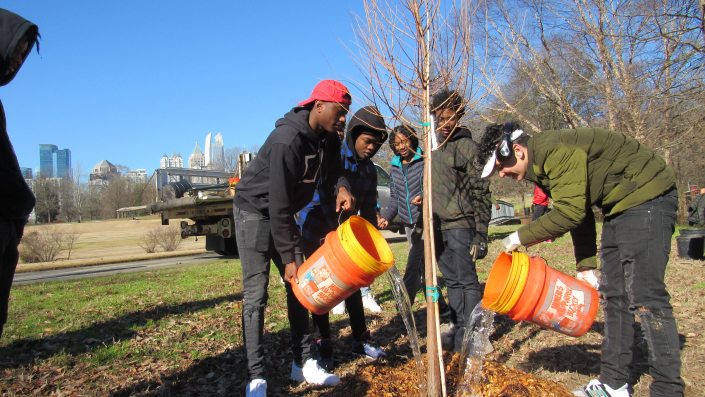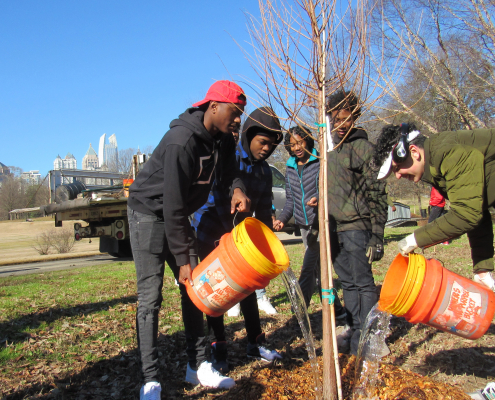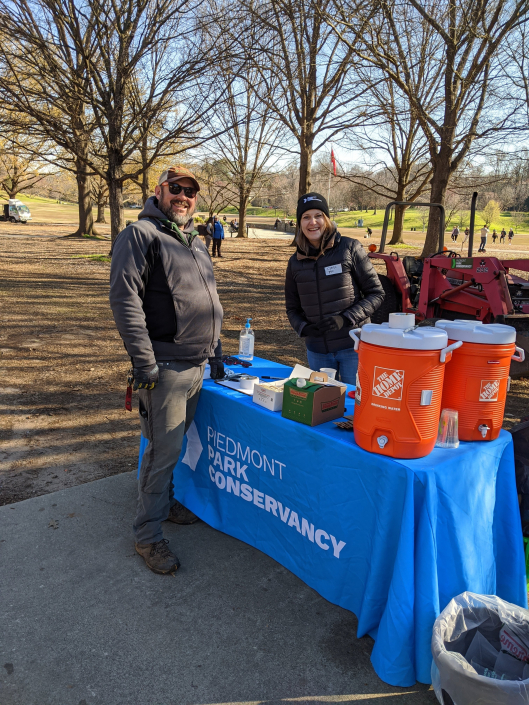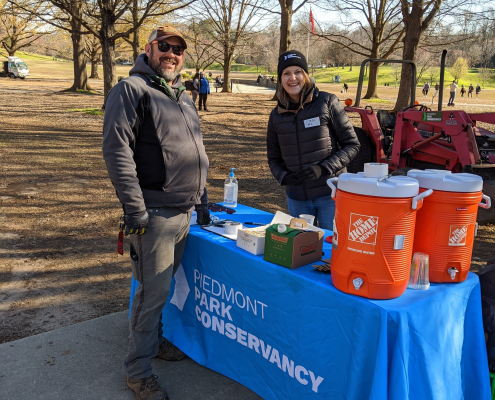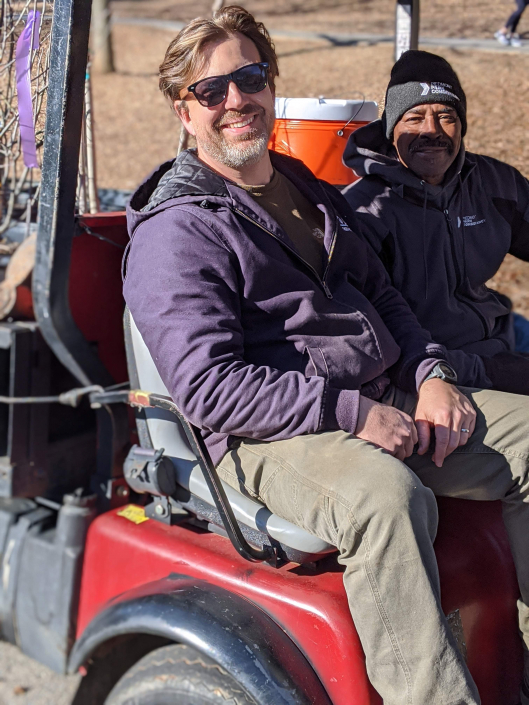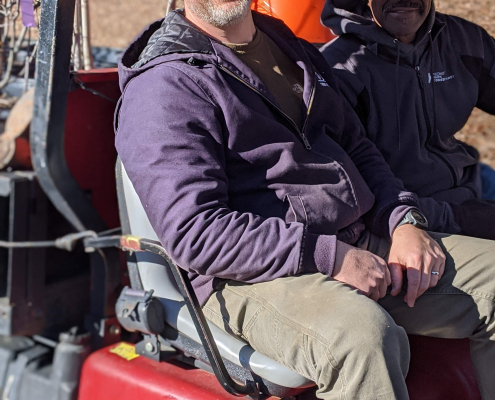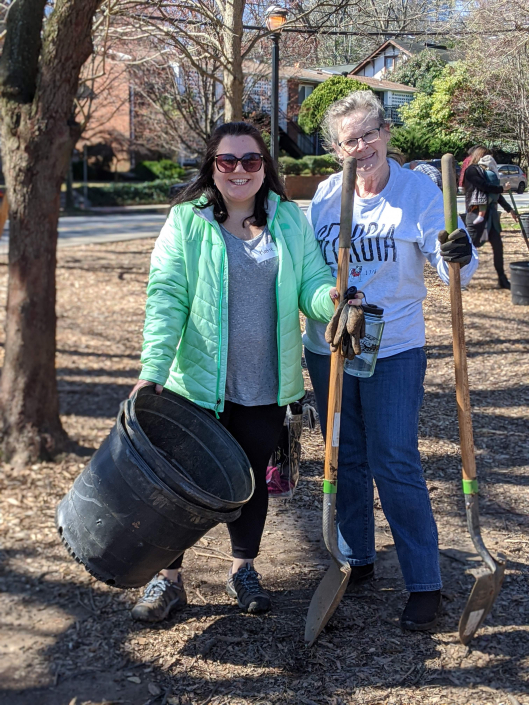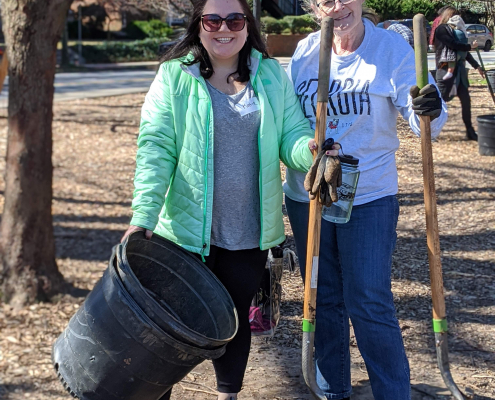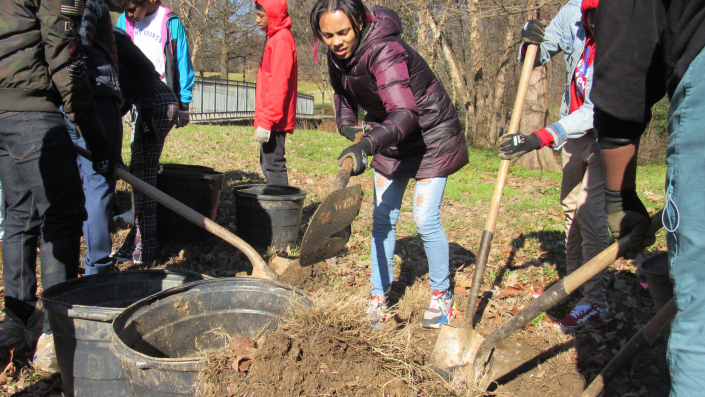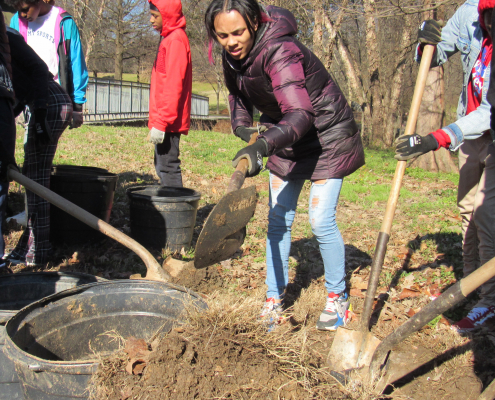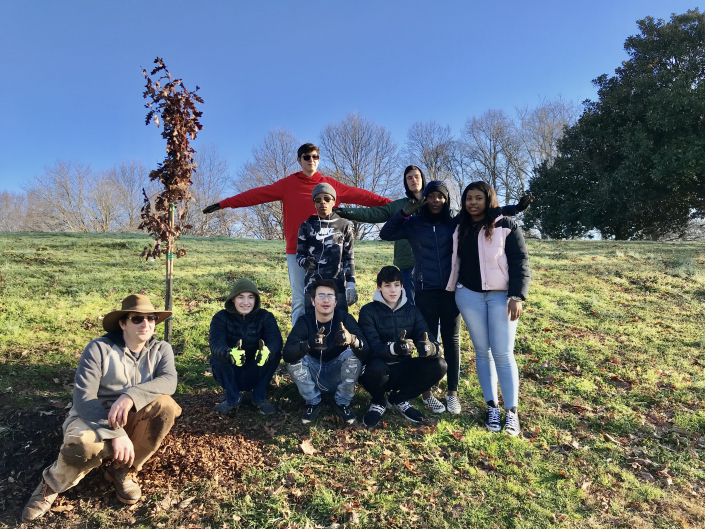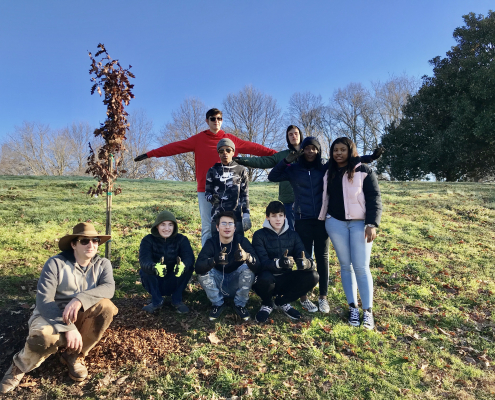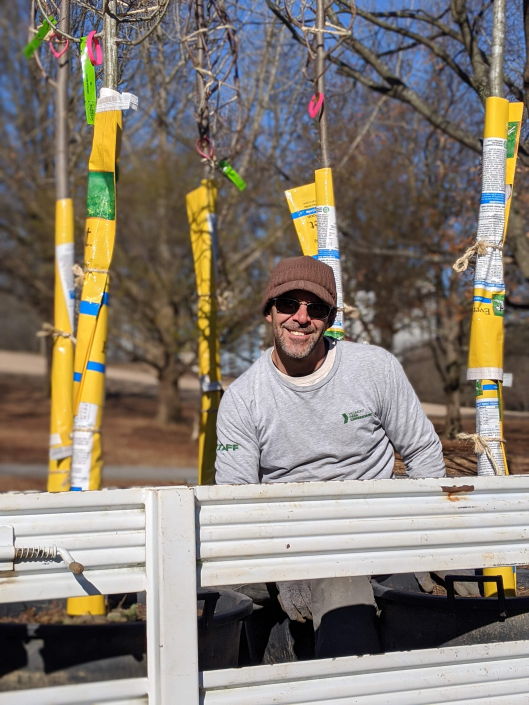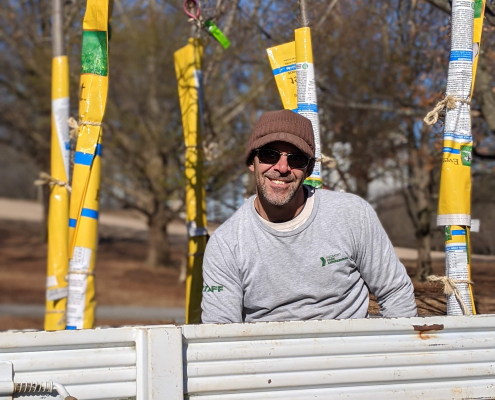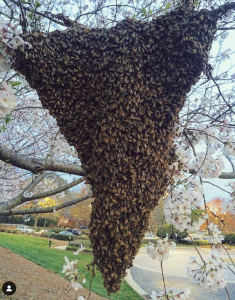Over 70 Trees Planted in Piedmont Park
With a rapidly increasing population in Atlanta, fighting negative environmental impacts can seem impossible. However, the solution to this issue can be found in Piedmont Park: trees.
To prepare for the increase in visitors that spring brings, the Piedmont Park Conservancy has been hard at work over the past two months to ensure that the Park stays green and gorgeous for all. After collaborating with Trees Atlanta, Grady High School and our own staff and board members, 74 new trees were planted on Oak Hill, the Meadow and in the Dog Parks. These trees will help keep the Park cooler during the warm spring and summer months, remove pollution from the air and be a home for native birds and other pollinators.
Urban trees provide a multitude of benefits for all Park visitors including clean air, shade in the summer, a food source for pollinators and a connection to a place and time. Newly planted trees offer hope for the future, and mature trees that live for 100 years act as historical markers for time and events. – Erica Glasener, Community Involvement and Events Manager
The Piedmont Park Conservancy is looking forward to continuing our dedication to providing a green space that is clean, safe and beautiful. However, we cannot do it alone. Your donation supports our efforts and keeps historic Piedmont Park clean, green and active.

